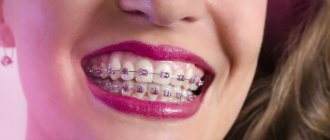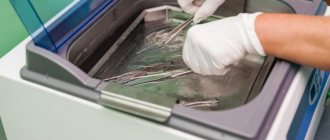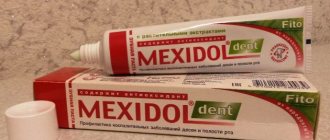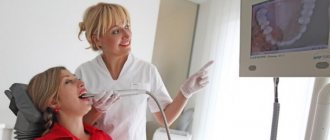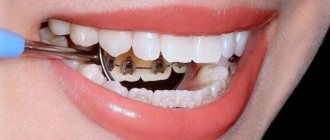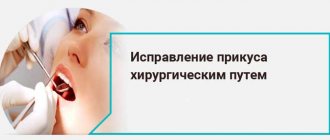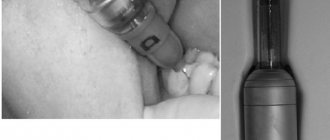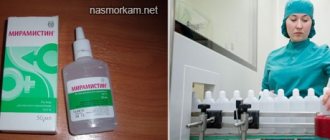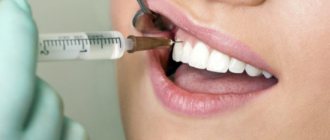Often dental treatment in children is not complete without anesthesia. Proven ways to calm a child during painful and uncomfortable procedures include the use of nitrous oxide, also called “laughing gas.” Many parents ask questions about how it will affect the child’s health, what side effects there may be and what contraindications exist.
Nitrous oxide in dentistry for children
In this article we will talk about how nitrous oxide is used in dentistry for children.
Sedation – what is it?
Sedation involves putting the patient into a half-asleep state while using nitrous oxide. This method, actively used in modern dentistry, can relieve the patient of fear and anxiety and set him at ease.
Interesting! Qualified specialists in the USA and England have been using nitric oxide for many years. This method has virtually no contraindications and is actively used in dental treatment for children. Our doctors use sedation so that children do not worry, cry or become hysterical during their next trip to the doctor.
About sedation with nitrous oxide
Sedation does not in any way affect a person’s main reflexes:
- breathing remains the same, movements are not limited or slowed down;
- mental activity is not impaired;
- the patient can talk, see, hear, understand.
At the same time, the child feels completely relaxed, and he is not negatively disposed to what is happening around him. A child under laughing gas will not even feel the dentist injecting an anesthetic and treating his teeth. Small children cannot sit in a chair for more than 5 minutes, but the duration of treatment with sedation can increase to 1 hour, which reduces the required number of doctor visits several times.
The child feels completely relaxed, but at the same time he is conscious
Side effects
During the introduction of a patient into anesthesia, there is a risk of developing supraventricular arrhythmia, bradycardia, and circulatory failure.
After recovery from anesthesia, in some cases the following occurs:
- Nausea and/or vomiting;
- Drowsiness;
- Diffuse hypoxia;
- Post-anesthesia delirium (manifested by nervousness, motor agitation, anxiety, confusion, agitation and/or hallucinations).
When using Nitrous Oxide for more than 2 days in a row, the following may occur:
- Leukopenia, pancytopenia;
- Respiratory depression;
- Hyperthermic crisis;
- Postoperative chills.
An overdose of dinitrogen oxide is manifested by a pronounced decrease in blood pressure or hyperthermic crisis, delirium, acute hypoxia, respiratory depression, bradycardia, arrhythmia, and circulatory failure.
Bradycardia is usually eliminated by administering 0.3-0.6 mg of atropine. In case of arrhythmia, correction of the content of gases in the blood is indicated. If respiratory depression occurs, it is necessary to reduce the dose of anesthetic, ensure airway patency, and sometimes artificial ventilation. In case of circulatory failure and arterial hypotension, plasma or a plasma-substituting agent is administered, the depth of anesthesia is reduced, and in some cases it may be necessary to discontinue general anesthesia.
In case of a hyperthermic crisis, inhalation is immediately stopped, oxygen supply is increased, then an antipyretic is administered, the water-salt balance and metabolic acidosis are corrected. To prevent a relapse of the crisis for 1-3 days after surgery, the patient is prescribed dantrolene (orally or intravenously at a dose of 4-8 mg/kg, divided into 4 applications).
We invite you to familiarize yourself with Bubbles on the lips - localization and possible pathologies
If delirium develops after the patient recovers from anesthesia, a small dose of a narcotic analgesic is administered.
Sedation: What you need to know
Sedation is not a pain-relieving procedure; it can only slightly reduce pain. To completely eliminate pain, resort to anesthesia or local painkillers.
When treating a child, the doctor must take care to create a favorable atmosphere so that nitric oxide can eliminate severe anxiety.
Interesting! If the child is not too small and there are no contraindications, experts strongly recommend sedation at the first visit to the doctor.
It is better to use sedation at the first visit to the doctor - thanks to it the baby will not be nervous
Adults who are afraid of visiting the dentist may also request the use of sedation. However, an adult, unlike a child, may have more contraindications (chronic pathologies, alcohol dependence, skull trauma).
Nitric oxide is used for children who have reached a certain age, can speak and respond adequately to the doctor's actions.
During the procedure, the child will be able to talk and watch cartoons.
Indications
Nitrous oxide is used in pediatric dentistry:
- At the first visit to the doctor, especially if dental diseases are advanced and the child needs to undergo any painful manipulations. Using sedation will help avoid fear of dental treatment during subsequent visits.
- When treating preschool children, since without nitrous oxide it is difficult for children 3-5 years old to sit motionless in a chair for longer than 15 minutes, and the use of the drug allows children of this age to be treated for teeth for up to 40 minutes. As a result, the number of doctor visits is reduced.
An example where it is impossible to do without using nitrous oxide in treatment, see below:
Anesthesia and sedation: distinctive features
Sedation and anesthesia are completely different methods used in dental treatment.
During sedation, a person remains conscious, can speak and breathe calmly. Anesthesia presupposes a complete shutdown of consciousness, immersion in sleep and lack of reaction to what is happening.
Anesthesia differs from sedation in that during it the patient is not conscious
Anesthesia and painkillers
Sedation is not considered an alternative to anesthesia. Along with it, traditional methods of pain relief are used - for example, local anesthesia. Most parents worry about the child’s condition during the administration of an anesthetic.
Sedation for children is carried out before intervention in the oral cavity. In addition, nitrous oxide has a slight analgesic effect, and a real professional will give the injection so that the child will not even notice it. Also, the mask that the child puts on his face does not allow him to see the syringe and various instruments in the doctor’s hands.
Nitric oxide has a mild pain-relieving effect
How does sedation work?
Nitric oxide has been widely used for gynecological and surgical purposes for decades.
Interesting! One American company spent several years developing a system that creates a soothing solution consisting of 70% nitrous oxide and 30% oxygen. This is an electronically controlled mechanism that has a high degree of protection against failures and errors when determining the dose of the solution.
The supply of nitrous oxide is carried out thanks to a special apparatus
Gas supply is a fully automated process. Through a mask that covers the nose, the mixture enters its cavity, and a high-speed pump absorbs exhaled air. Taking into account the patient’s age and general health, the specialist uses the device to calculate the dose, which can be adjusted during the treatment process.
When the gas is inhaled, the patient becomes calm and relaxed. He remains conscious all the time, can react and carry on a conversation. Upon completion of the treatment process, the mask is removed and the laughing gas immediately ceases its effect.
Laughing gas stops working almost immediately after the patient's mask is removed.
This allows you to feel emotionally comfortable when visiting a doctor, without feelings of anxiety and fear.
Advantages and disadvantages of the procedure
| Advantages | Flaws |
| 1. Laughing gas, used in small doses and having a relaxing effect, is similar to mild intoxication. 2. The procedure is called “sedation” because the patient’s consciousness is slightly suppressed, but basic reflexes are not affected. 3. The child’s feeling of pain decreases, fear fades into the background, the stressful state appears less and less at each visit, and later goes away completely. 4. Nothing prevents the child from talking, moving and breathing. Parents will not have to use force to keep the child in the chair. 5. Thanks to thorough gas purification, the product cannot provoke an allergic reaction or cause irritation to the respiratory system. 6. Gas does not take part in the internal processes of the body. This allows us to assert that it is harmless when treating children. | 1. In some cases, children may experience headaches and dizziness. 2. Gas has a strong pungent odor, which not all children like. 3. Nitrous oxide should not be used for a runny nose or other respiratory problems. 4. You will have to pay extra for sedation. 5. Sometimes the effect of laughing gas is paradoxical. The expected relaxing effect is replaced by sharp excitement and inadequacy. Sometimes vomiting occurs. 6. Since nitrous oxide is not an anesthetic, in some cases it is necessary to additionally use local anesthesia. |
This procedure has both advantages and disadvantages
Advantages
- Nitrous oxide used in low concentrations has a relaxing effect, similar to mild intoxication. It is called sedation, since the patient’s consciousness is slightly depressed, but the main reflexes are preserved. The child experiences less pain, and the stress associated with dental treatment is easier to bear. At the same time, the baby can breathe, speak and move.
- The use of nitrous oxide calms children who are afraid of dentists or are very nervous in the dentist's office. To prevent worries from affecting the results of dental manipulations, they resort to such treatment with sedation. Parents will not need to hold the baby by force.
- Thanks to the high-quality purification of nitrous oxide, this product practically does not cause allergies and does not irritate the respiratory tract. This gas does not enter into any reactions inside the body (it is inert) and does not bind to hemoglobin. As soon as the supply has stopped, after 3-5 minutes the nitrous oxide is completely eliminated from the body in the same form in which the gas entered the body. This makes this medication one of the safest medicines and allows it to be used in treatment of even the smallest children.
- Treatment of children's teeth with nitrous oxide is in demand when the child is hyperactive. The drug will make the baby calmer and quite often causes drowsiness.
When should you use sedation?
Dental treatment for children is a rather difficult process. Sedation allows you to remove children's fear and fear. It is especially worth using it at the first visit to the doctor in order to prevent a negative experience and so that the child has a good understanding of the doctor.
Sedation should also be used for long-term treatment lasting more than 30-40 minutes.
Important! It is difficult for a child to sit in one place for so long, so it is especially important to relax and calm the baby in order to facilitate the treatment process.
Sedation is necessary because it is difficult for a child to sit in one place for a long time.
The use of nitrous oxide in pediatric dentistry
The relaxing and calming effect of nitrous oxide lasts only a few minutes, so the child must breathe the sedative mixture continuously throughout the treatment. For this, a special nasal (worn over the nose) mask is used, which does not interfere with the dentist’s work.
At the Natadent clinic, dental treatment for children under nitrous oxide usually includes the following steps:
- The doctor talks with the little patient, explaining to him what will happen next.
- The child lies down in a comfortable chair, above which there is a large screen with a cartoon.
- The doctor puts a nasal mask on him.
- When relaxation occurs, the doctor begins to work. If necessary, local anesthetics are used in the form of sprays and injections.
- During the entire procedure, the child remains conscious, so the doctor and parents can communicate with him.
- When the treatment is finished, the mask is removed and after a few minutes the child returns to his normal mood.
As you can see, nitrous oxide sedation
has nothing to do with anesthesia. Her main task is to create the most comfortable conditions for the child so that he tolerates the treatment well and is not afraid of the dental office in the future.
Contraindications
Sedation is not used in complex therapy, when, in addition to the child’s fear, it is necessary to eliminate the reaction to external irritating factors.
Laughing gas should not be used when:
- allergies, colds, sinusitis and if the disease complicates the natural process of breathing;
- lack of contact between the child and the doctor. Therefore, it is not recommended to use nitrous oxide for children under 3 years of age;
- recent head injury;
- seizures and epilepsy;
- excessive panic and fear.
One of the contraindications to this procedure is sinusitis.
How is laughing gas used?
Before using gas for children, you need to familiarize parents in detail with the upcoming procedure. It is important that the child sits in the dental chair independently and agrees to dental treatment. The baby puts a mask on his face, to which tubes from the cylinder are connected - gas flows through them.
Interesting! The cylinder is filled with nitrogen, oxygen and other components in small doses.
The effect of laughing gas will begin a few minutes after putting on the mask.
The doctor turns on special equipment, and nitrous oxide enters the patient's nose. After a couple of minutes, the doctor can examine the baby’s oral cavity and begin treatment. The child can watch cartoons during treatment. The mask does not prevent the doctor from reaching problem areas.
Benefits of dental treatment in children with nitrous oxide
In modern dentistry, effective and relatively harmless drugs for general anesthesia are widely used. But it is better to avoid them if possible. Sedation with nitrous oxide allows a child to undergo dental treatment without pain and discomfort, without resorting to anesthesia. Therefore, the doctors at the Natadent
recommend sedation whenever appropriate.
Benefits of Nitrous Oxide Treatment in Pediatric Dentistry
:
- rapid onset of effect and rapid return to normal well-being;
- high efficiency, especially when treating children;
- no health consequences;
- minimum contraindications;
- absence of allergies and side effects (including nausea, which is characteristic of all anesthesia drugs);
- the opportunity to communicate with the child during treatment.
Under sedation, the child is in an extremely relaxed state, watches a cartoon and does not want to go anywhere. Thanks to nitrous oxide, pediatric dentist
can work on his teeth for up to one and a half to two hours, whereas usually children can hardly stand even 20 minutes in the dental chair.
At the same time, the child himself develops a positive experience. He remembers that several teeth can be treated at one time without experiencing discomfort. Thanks to this, next time he will come for treatment much more willingly. And instead of fear, as often happens, he will develop an understanding of how important it is to visit the dental office in a timely manner.
Sedation: possible consequences
Sometimes children experience a sharp rise in temperature and hyperemia. Sedation can cause temporary disruption of the respiratory and cardiovascular systems.
Current observations indicate a significant risk of cognitive impairment during dental treatment with sedation, which is due to deterioration in the functioning of brain neurons. Although the risk is small, it is unlikely that anyone would want these circumstances to affect them.
In rare cases, temporary complications may occur after such a procedure, for example, hyperemia
At what age can you use nitrous oxide?
Children under 7 years old are often given sedation, as it significantly increases the time the baby spends in the chair. This is due to the fact that a very young child practically does not sit still, especially if he feels fear, and after 10 minutes he will try to leave, and if that doesn’t work, he will start to have a tantrum. In such a short period of time, the doctor will not be able to completely and efficiently cure teeth. In this case, you will need 5-6 visits to the dentist for complete treatment.
This procedure can be performed on children over 4 years of age.
Often among patients there are children who already have negative experiences with dentists. In this case, nitrous oxide is what is really needed. In most cases, the child has a specific unpleasant incident in his memory, which subsequently led to fear and fear.
Since during the entire treatment the child feels and behaves quite consciously, he needs to communicate with the doctor. Therefore, it is important for a doctor to be able to invite a child into a chair in a playful format and be able to put a mask on him. The mask has a slightly sweet smell, reminiscent of children's chewing gum.
Interesting! This procedure can be done for children over 4 years old. In some cases, it is possible to establish contact with three-year-old children. In individual cases, under the guidance of a specialist, the procedure is permitted from 2.5 years.
Sedation with nitrous oxide. — nice_cake writes on babyblog
I decided to write this review after my son (4.5 years old) started having huge problems with his teeth. And when the prospect of a long and painful treatment loomed before us, we had to study methods and methods of pain relief. I didn’t find anything useful in the reviews about sedation with nitrous oxide, so I’m telling our story, I hope it will help someone in solving the problem.
At the end of the summer of this year, I noticed what looked like a tiny hole on my son’s tooth. And now I understand what a total mistake it was to delay going to the dentist. In the end, we only got to the doctor now. I blame myself terribly, and analyzing why this happened, I understand that this is a purely psychological reason, due to my personal painful experience with dentistry, especially since childhood. This is stupidity on my part, but I was really scared to take my son to get his teeth treated and I constantly put off this moment. And she paid.
I signed up for a paid clinic, but after reading how they could impose a bunch of unnecessary procedures to siphon off money, I decided to go to the district first, not to treat, just to understand the picture of what was happening to my teeth. But I intended to treat only in a paid one, with lisping doctors and cartoons hanging from the ceiling. At an appointment at a district clinic, just starting to look, the doctor writes out a referral to surgery for urgent tooth extraction. The child has flux on the lower painter. And two small caries on the top ones. I can’t describe my condition, but I really felt bad, I wanted to grab my son and run away. Having pulled myself together, I began to explain to the doctor that right now we can go to a paid one and do everything that is required of us to facilitate the removal procedure. The doctor looked at me with surprised eyes and convinced me that everything was the same here and in general the tooth was no longer waiting, it had to be removed here and now. While we were waiting in the surgery, I explained to my son what was going to happen. I think that lying in such situations is impossible and the child should know what is happening. She told him about how they would freeze the tooth, about the injection, and about the fact that the tooth would be removed and he should not feel much pain. She promised that we would then put a bad tooth under the pillow, then the tooth fairy would come and everything like that. The son was very impressed about the fairy, but about the rest, I can’t say that he was very scared, he sat contentedly and thought about what he would spend the money from the fairy on. And then the nightmare began, a soulless, rude nurse, a stern surgeon. He suggested local anesthesia and sit and hold my son, or he would be sent to the hospital for surgery under general anesthesia. General anesthesia!! Describe my condition? I think it's clear. Without hesitation, I chose local anesthesia. In general, from the anesthesia until the tooth was pulled out there was hell, screams, tears, blood, my son’s frightened eyes. They weren’t even allowed to take the tooth. When they came out it was like they hit me on the head with a shovel. This is how I gave my son his first experience...
We invite you to familiarize yourself with how long braces are worn - the timing of necessary treatment in children and adults. Minimum and maximum wearing time
Then, in two days, we had to go to a paid one to treat those two minor caries. And to be honest, I had no idea how? How can I even force my son to sit in a chair now? And then hell #2 begins. The very next day, my son’s fistula inflates on the upper painter (where supposedly there is not deep caries). And I understand that we face the prospect of having another tooth removed. After literally yesterday we had a tooth removed in a barbaric way, I was honestly horrified. And then I start looking for information about sedation. I won’t describe its types here; there is a lot of information on the Internet and many probably know what it is. We chose superficial sedation with nitrous oxide. But I couldn’t find any real reviews on whether this really makes the procedure easier for the child (especially after the terrible first experience).
So, I'm telling you. Before the procedure itself, you must endure a fasting pause. Do not eat or drink for 4 hours. Here I’ll immediately make a reservation that this is the requirement of our anesthesiologist in our clinic where we performed the procedure. Calling other clinics, no one else made such a demand. But our anesthesiologist convinced me that, from his experience, it was better to do this. There have been cases when a child developed a gag reflex and vomit entered the lungs. This is a rare occurrence, but I decided to play it safe the first time.
My son went to the clinic with fear, of course, and asked if the tooth would be removed. I explained that most likely yes, but promised that this time everything would be different. In the office itself there was a dentist, an anesthesiologist and an assistant. My husband and I were sitting next to each other. Everyone was friendly, they talked about every step they took and this helped a lot. It is very important for children to understand what is happening, I am definitely convinced of this. The son sat down in a chair, chose which cartoon he would watch, then the anesthesiologist talked about the oxygen mask that you need to put on and breathe through your nose. And in general, what a great kid, and look, does he really look like a pilot? Yeah, the spitting image of a pilot, everyone else supported him. In general, everything was done to avoid tension. Although of course I was shocked. Next, air was first released through the mask and then gas was gradually added. As they explained to us, the effect was supposed to be like a glass of wine, calming and relaxing. The son sat quietly and watched a cartoon. They anointed the gums with a painkiller and after a couple of minutes they gave the injection itself with freezing. The son squeaked just a little. When the first injection took effect, a second one was given (double freezing is done to remove the tooth). Next is treatment. Next to the tooth to be removed, there was another tooth with caries and suspected pulpitis. We decided to heal immediately. 40 minutes in the chair and you are ready to continue removing the diseased tooth. Bottom line. 45 minutes in a chair. Twice during all this time the son said “Ah”, not a single tear. After the treatment, the anesthesiologist gave a gift. We took off the mask, sat in the playroom for 10 minutes and went home. My son’s condition was as if nothing had happened, and he promised the doctor that he would come again soon to finish treating the rest of his teeth. The asking price is 10,000. For two teeth (one for treatment, the second for removal) and the anesthesia itself. Without tears, nerves and most importantly FEAR. Issue price in government clinic – 400 rub. For one tooth, with blood, yelling, wild fear and rude doctors.
We suggest you read: Sore throat and tongue as if burned
What really offends me is that the doctor in the state. The clinic convinced me, at that moment simply in a state of passion, that the paid ones would have all the same procedures. But this is a damn lie, a real one. The only question was about money, I immediately said that we could go to a paid one and make everything easier. Yes, at that time I did not know about sedation, or that it was even possible to simply relieve pain from the injection itself with anesthesia. And I still don’t understand what the point was in convincing me. For 400r?
How quickly does sedation wear off after the procedure?
The big advantage of sedation is that its effect will not take long and will begin in a couple of minutes - the child will immediately feel relaxed and will not pay much attention to the doctor’s actions.
100% of the laughing gas is released from the body within 30 minutes after the end of the procedure. Therefore, the child should not run, play or show any activity during the first two hours.
Important! Attending school or kindergarten is not a contraindication on the day of treatment.
For two hours after the procedure, it is better that the child does not run or be particularly active.
Skydent advantages
SkyDent is a clinic that uses the latest technologies and innovations in treatment, ensuring the comfort and safety of our patients.
Our dentistry uses all the equipment necessary for high-quality work; we constantly ensure that it undergoes all technical inspections on time.
The director of our clinic is an experienced anesthesiologist, so special attention was paid to the quality of the intervention under anesthesia.
One of the biggest advantages is that the patient does not need to be hospitalized. Observation is required for several hours after the intervention. After this, you can go home (you can drive a vehicle no earlier than 6 hours after the operation, the specific time is determined by the anesthesiologist depending on the drugs used).
In our work, we use only new and modern drugs that have minimal side effects and are absolutely safe for children.
If you want to learn more about procedures under anesthesia, you can call or write to us in instant messengers.
Dental treatment under anesthesia
| # | Type of service | Price BYN for citizens of the Republic of Belarus |
| 1 | Preparation for anesthesia and post-anesthesia observation | from 35.00 BYN |
| 2 | Inhalation anesthesia with preserved spontaneous breathing (patients 1-2 ASA)(1 hour) | from 90.00 BYN |
| 3 | Inhalation anesthesia with preserved spontaneous breathing (patients 1-2 ASA)(1 min) | from 1.50 BYN |
| 4 | Total intravenous anesthesia with preserved spontaneous breathing (patients 1-2 ASA)(1 hour) | from 90.00 BYN |
| 5 | Total intravenous anesthesia with preserved spontaneous breathing (patients 1-2 ASA)(1 min) | from 1.50 BYN |
| 6 | Balanced anesthesia with artificial ventilation (IVL) (1 hour) | from 108.00 BYN |
| 7 | Balanced anesthesia with artificial ventilation (IVL) (1 min) | from 1.80 BYN |
| 8 | Total intravenous anesthesia with artificial ventilation (IVL) (1 hour) | from 108.00 BYN |
| 9 | Total intravenous anesthesia with artificial ventilation (IVL) (1 min) | from 1.80 BYN |
Reviews
Almost all reviews from doctors regarding the use of laughing gas are positive. Dentists claim that the technology allows for better and faster dental treatment for a child, relieving him of feelings of fear or even hysterical attacks. Since the amount of gas contained is minimal and it is thoroughly purified, the child’s body is not in any danger.
Doctors speak positively about this procedure
As for parents, their opinions on the use of nitrous oxide vary. Some believe that this is a good way to calm the baby during the procedure, while others are wary of this and try to avoid this procedure. Some parents are confused by the fact that the child remains fully conscious during treatment. Because of this, many people prefer to use anesthesia instead of nitrous oxide. Another controversial issue concerns the price of using such technology. For some, the cost is quite acceptable, for others it is too high.
Reviews about the procedure
Answers to popular questions
Is there a need to additionally use local anesthesia?
Yes, and nitrous oxide helps enhance its effect.
Is special training needed?
No special preparatory steps are required. Children should refrain from eating for two hours before treatment. After its implementation, there are no prohibitions.
There is no need to prepare for this procedure
Is there a need for additional inspections before using nitrous oxide?
As a rule, additional examinations are not carried out, but in some cases they are necessary. This issue is discussed in more detail during a consultation with a doctor, when a treatment plan and method of treatment are drawn up.
It is better to consult a doctor before the procedure.
Indications and contraindications for use
Nitrous oxide sedation, like any other anesthesia method, has its pros and cons. There is also a list of special indications and specific contraindications for use.
Among the indications are the following factors:
- Directly for the purpose of pain relief
- It is widely used in children's practice, because due to their age they do not understand basic things, do not tolerate pain, and in general, it is difficult to stay in one place, and the use of nitrous oxide solves several problems at once
- A pleasant relaxing procedure helps to easily cope with psychological stress in children - they do not have the first negative experience due to the absence of pain, and in the future children are not afraid to come to the dentist for an appointment
- If the procedure lasts 40 minutes or more, then this method of anesthesia is suitable, because children cannot sit for a long time, and the substance relaxes well
- If you are gagging, nitrous oxide can help prevent nausea.
Among the contraindications, the following points stand out:
- If you have nasal congestion and sinusitis, as well as other diseases associated with difficulty inhaling, you should not prescribe this method of sedation
- Chronic or acute painful conditions during the height of
- Children are at a very young age, when the child does not yet understand what is required of him
- If the child does not make any contact with the doctor, then he is forced into an unconscious state
- Full stomach, which will cause vomiting, food should be taken no later than 2 hours before the procedure
- Increased excitability
- Acute respiratory infectious diseases.
